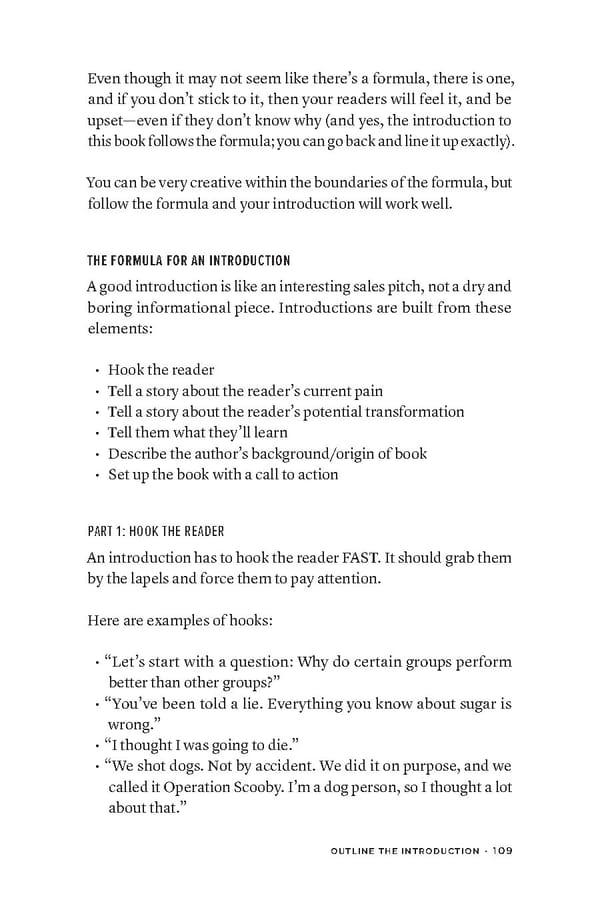Even though it may not seem like there’s a formula, there is one, and if you don’t stick to it, then your readers will feel it, and be upset—even if they don’t know why (and yes, the introduction to this book follows the formula; you can go back and line it up exactly). You can be very creative within the boundaries of the formula, but follow the formula and your introduction will work well. THE FORMULA FOR AN INTRODUCTION A good introduction is like an interesting sales pitch, not a dry and boring informational piece. Introductions are built from these elements: • Hook the reader • Tell a story about the reader’s current pain • Tell a story about the reader’s potential transformation • Tell them what they’ll learn • Describe the author’s background/origin of book • Set up the book with a call to action PART 1: HOOK THE READER An introduction has to hook the reader FAST. It should grab them by the lapels and force them to pay attention. Here are examples of hooks: • “Let’s start with a question: Why do certain groups perform better than other groups?” • “You’ve been told a lie. Everything you know about sugar is wrong.” • “I thought I was going to die.” • “We shot dogs. Not by accident. We did it on purpose, and we called it Operation Scooby. I’m a dog person, so I thought a lot about that.” OUTliNE ThE iNTrODUCTiON · 109
 The Scribe Method by Tucker Max Page 108 Page 110
The Scribe Method by Tucker Max Page 108 Page 110